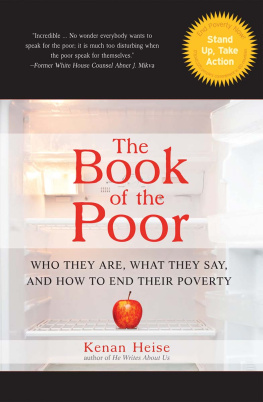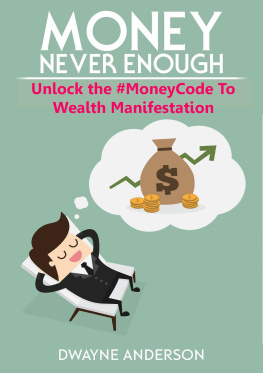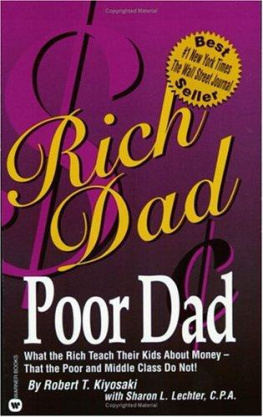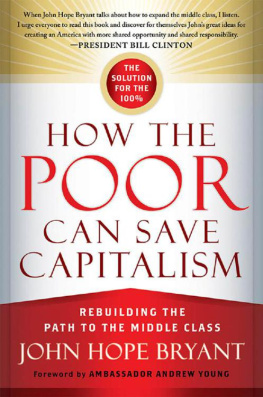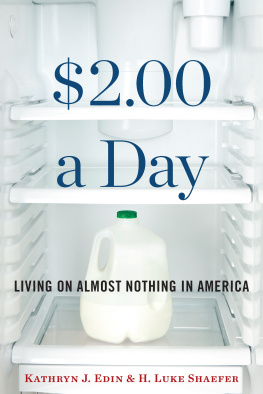PORTFOLIOS
OF THE POOR
DARYL COLLINS
JONATHAN MORDUCH
STUART RUTHERFORD
ORLANDA RUTHVEN

PORTFOLIOS
OF THE POOR

How the Worlds Poor
Live on $2 a Day
PRINCETON UNIVERSITY PRESS
PRINCETON AND OXFORD
Copyright 2009 by Princeton University Press
Requests for permission to reproduce material from this work
should be sent to Permissions, Princeton University Press
Published by Princeton University Press, 41 William Street,
Princeton, New Jersey 08540
In the United Kingdom: Princeton University Press, 6 Oxford Street,
Woodstock, Oxfordshire OX20 1TW
press.princeton.edu
ALL RIGHTS RESERVED
Eighth printing, and first paperback printing, 2011
Paperback ISBN 978-0-691-14819-9
The Library of Congress has cataloged the cloth edition of this book as follows
Portfolios of the poor : how the worlds poor live on two dollars a day /
Daryl Collins... [et al.].
p. cm.
Includes bibliographical references and index.
ISBN 978-0-691-14148-0 (hardcover : alk. paper)
1. Poor. 2. Microfinance. 3. Home economicsAccounting. I. Collins, Daryl.
HC79.P6.P67 2009
339.46dc22
2008055161
British Library Cataloging-in-Publication Data is available
This book has been composed in Minion Typeface
Printed on acid-free paper.
Printed in the United States of America
9 10 8
Contents

Chapter One
The Portfolios of the Poor
Chapter Two
The Daily Grind
Chapter Three
Dealing with Risk
Chapter Four
Building Blocks:
Creating Usefully Large Sums
Chapter Five
The Price of Money
Chapter Six
Rethinking Microfinance:
The Grameen II Diaries
Chapter Seven
Better Portfolios
Appendix 1
The Story behind the Portfolios
Appendix 2
A Selection of Portfolios
Tables

Figures

PORTFOLIOS
OF THE POOR
Chapter One

THE PORTFOLIOS
OF THE POOR
PUBLIC AWARENESS of global inequality has been heightened by outraged citizens groups, journalists, politicians, international organizations, and pop stars. Newspapers report regularly on trends in worldwide poverty rates and on global campaigns aimed at halving those rates. A daily income of less than two dollars per person has become a widely recognized benchmark for defining the worlds poor. The World Bank counted 2.6 billion people in this category in 2005two-fifths of humanity. Among these 2.6 billion, the poorest 0.9 billion were scraping by on less than one dollar a day.
For those of us who dont have to do it, it is hard to imagine what it is like to live on so small an income. We dont even try to imagine. We suppose that with incomes at these impossibly low levels, the poor can do little for themselves beyond hand-to-mouth survival. Their chances of moving out of poverty must depend, we assume, either on international charity or on their eventual incorporation into the globalized economy. The hottest public debates in world poverty, therefore, are those about aid flows and debt forgiveness, and about the virtues and vices of globalization.imagine how you would survive on a dollar or two a day, its even harder to imagine how you would prosper.
Suppose that your household income indeed averaged two dollars or less a day per head. If youre like others in that situation, then youre almost surely casually or part-time or self-employed in the informal economy. One of the least remarked-on problems of living on two dollars a day is that you dont literally get that amount each day. The two dollars a day is just an average over time. You make more on some days, less on others, and often get no income at all. Moreover, the state offers limited help, and, when it does, the quality of assistance is apt to be low. Your greatest source of support is your family and community, though youll most often have to rely on your own devices.
Most of your money is spent on the basics, above all food. But then how do you budget? How do you make sure there is something to eat and drink every day, and not just on the days you earn? If that seems hard enough, how do you deal with emergencies? How can you be sure that you can pay for the doctor and the drugs your children need when they fall sick? Even without emergencies, how do you put together the funds you need to afford the big-ticket items that lie aheada home and furniture, education and marriage for your children, and some income for yourself when youre too old to work? In short, how do you manage your money if there is so little of it?
These are practical questions that confront billions every day. They are also starting points for imagining new ways for businesses to build markets that serve those living on one or two or three dollars per day. They are obvious starting points as well for policymakers and governments seeking to confront persistent inequalities.
Though these questions about the financial practices of the poor are fundamental, they are surprisingly hard to answer. Existing data sources offer limited insights. Neither large, nationally representative economic surveys of the sort employed by governments and institutions like the World Bank, nor small-scale anthropological studies or specialized market surveys, are designed to get at these questions. Large surveys give snapshots of living conditions. They help analysts count the number of poor people worldwide and measure what they typically consume during a year. But they offer limited insight into how the poor actually live their lives week by weekhow they create strategies, weigh trade-offs, and seize opportunities. Anthropological studies and market surveys examine behavior more closely, but they seldom provide quantified evidence of tightly defined economic behavior over time.
Given this gap in our knowledge and our own accumulating questions, several years ago we launched a series of detailed, yearlong studies to shed light on how families live on so little. Some of the studies followed villagers in agricultural communities; others centered on city-dwellers. The first finding was the most fundamental: no matter where we looked, we found that most of the households, even those living on less than one dollar a day per person, rarely consume every penny of income as soon as it is earned. They seek, instead, to manage their money by saving when they can and borrowing when they need to. They dont always succeed, but over time, even for the poorest households, a surprisingly large proportion of income gets managed in this waydiverted into savings or used to pay down loans. In the process, a host of different methods are pressed into use: storing savings at home, with others, and with banking institutions; joining savings clubs, savings-and-loan clubs, and insurance clubs; and borrowing from neighbors, relatives, employers, moneylenders, or financial institutions. At any one time, the average poor household has a fistful of financial relationships on the go.
Next page



